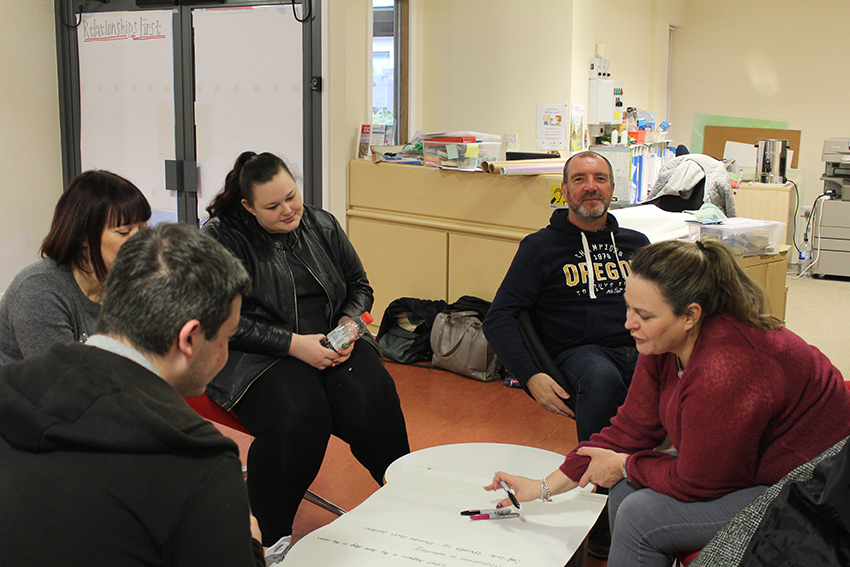Becoming the Co-Design Crew
Over 2 days and 1 evening the Citizens and Public Servants came together. They started to work together by exploring their interpretations of Our Vision, specifically how Corporate Parents would behave and how care leavers would feel if Corporate Parents cared for care leavers like they did their own children. They then shared their research findings so they could reach a decision about which issues they wanted to focus on in this project.

Crafting the Project Vision
Our Vision is for corporate parents to care for care leavers like they would their own children.
Each team had already thought about the vision. This was an opportunity to think about it again as the Co-Design Crew. We split into three groups and each group through about what people may think, say and do for this vision to be taking place in practice. Their views were recorded and they chose their top five in each group.

Saying

Thinking

Doing

Top 5 final answers from each group
Fifteen key behaviours (and 100 descriptions) for Corporate Parents were identified and five key experiences’ (and 23 descriptions) that mean Care Leavers feel loved. These behaviours and descriptions are shared in detail in Our Research Findings.

Discussing and finalising our perspective about Our Vision as the Co-Design Crew
The Crew decided Our Vision involves a reciprocal relationship between Care Leavers and Corporate Parents. A reciprocal relationship was described as ‘A two-way street’ and ‘When things go both ways’. It was acknowledged this means both people will care for one another and means each person will need to be vulnerable at times.
Despite being a reciprocal relationship it was acknowledged Corporate Parents need to lead this relationship by example. Part of leading by example was described as Corporate Parents taking on a parental approach, i.e. looking out for care leavers interests like they would their own child.
More about Our Vision is shared in Our Research Findings.
Presenting Research Findings
Over 1.5 days presentations were made from the Citizens and Public Servants about the enablers and barriers people experience when developing and maintaining relationships as young people leave care.
To support people share and discuss their interpretations of what they heard, each person was asked to write down similarities and differences between each teams findings on green and pink post-it-notes.
The similarities and differences were then clustered and themed (blue post-it-notes) and each person was given three red dots to place on three themes they thought were the most important to respond to in this project.











Deciding on the focus of Our Work
The themes that were the most popular were 1) behaviour change, 2) systems change, and 3) barriers. To learn more about how these areas of focus have been interpreted check out our co-designing pages.
